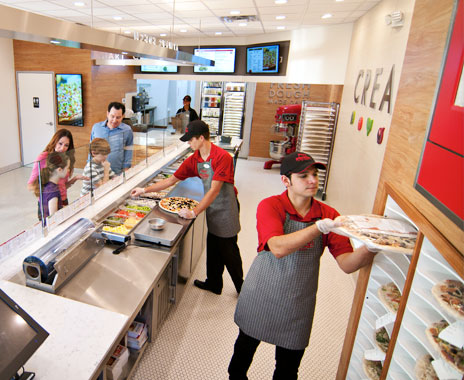Limited-service brands today are increasingly trying to figure out how to effectively market to their older customers while continuing to attract Gen Y/Millennial (born between 1980 and 1994) and Gen Z (born after 1994) customers.
According to a recent report from market research firm Technomic, a few restaurant brands are successfully reaching customers across the generational groups by appealing to their various needs. Among all demographic groups, In-N-Out Burger and Papa Murphy’s topped limited-service restaurants with customers who have the “strongest intent to return,” according to Technomic’s “Generational Consumer Trends” report.
In-N-Out appeals to Millennials more than any other brand because it offers new and exciting products and supports local community activities, the report states; Papa Murphy’s clocks in at No. 2 among that demographic. Meanwhile, Baby Boomer (born between 1946 and 1964) and Generation X (born between 1965 and 1976) customers are more likely to revisit Papa Murphy’s than any other brand, with In-N-Out coming in at a close second.
“We are focused on moms and families, providing that home-baked meal opportunity for customers who appreciate the quality,” says Jayson Tipp, senior vice president of strategy, marketing, and technology at Papa Murphy’s.
To appeal to members of multiple generations—and establish long-term patronage—Papa Murphy’s is reaching out to technologically savvy moms. It is partnering with a marketing firm to leverage a network of social media influencers who act as brand ambassadors.
“This includes offering moms special events, behind-the-counter tours of Papa Murphy’s, and talk radio segments featuring conversations with mom influencers,” Tipp says. “We feel this is a unique way to engage with our target demographic—moms that are becoming more active online.”
While moms may be Papa Murphy’s target audience, Tipp says, the brand is working to appeal to all generational groups. “The things we are doing to make sure we are accessible as generations shift is doing more with online ordering and digital marketing, building up our capabilities in social marketing, and leveraging new technologies as they become available,” he says.
The new point-of-sale system Papa Murphy’s is rolling out with NCR will help the brand “leapfrog” and adapt new technologies as they become available to restaurant operators, Tipp adds. The updated POS will help the chain improve communications to its consumers and digital coupon scanning, and will also include a loyalty program.
Other brands are similarly trying to adapt to multiple generations’ preferences.
At Burger 21, Generation X is the most popular demographic, making up 42 percent of its customer base, but Generation Y is another fast-growing customer group. “Burger 21 appeals to all audiences and ages, but we’re seeing noteworthy growth in Gen Y customers coming in with their families,” says Kim Higgins, senior marketing manager for Burger 21. “It’s typical to see families of three generations enjoying a meal together at Burger 21.”
Burger 21 executives have noticed that Millennials are particularly interested in chef-inspired recipes and quality ingredients, as well as in the brand’s social media promotions and special offers. Meanwhile, nostalgic elements of Burger 21’s contemporary-style diner atmosphere, like the shake bar, appeal more to Boomers. But the diversity of its menu—including burgers made with tuna, shrimp, beans, and other proteins—helps Burger 21 appeal to all audiences and age groups, Higgins says.
Firehouse Subs’ customer base is fairly evenly split among three age groups: 33 percent of its customer base are Baby Boomers, 33 percent are Millennials, and 23 percent are Generation X.
“Something that tends to resonate with Millennials and Generation X customers is commitment to the community,” says CEO Don Fox. “We have had great success in regard to our Public Safety Foundation.”
Millennials are undoubtedly an important group to Firehouse Subs and other limited-service restaurants. Twenty-three percent of Millennials—more than any other generational group—say they plan to eat at fast-food establishments more often over the next year, according to Technomic.
Still, Firehouse Subs and other operators cannot ignore Boomers, who account for just as much overall restaurant traffic and spending as Millennials, Fox says. “The No. 1 thing we have done for Boomers is put a focus on nutrition and health,” he says. “We launched a healthy menu in early March that has been successful for us.”
Ultimately, limited-service operators must aim to attract all demographic groups, and the basics of providing high-quality food and customer service in a pleasing environment could do the trick. “How we stay focused on all generations is the quality of our product,” Fox says. “Plus, everybody appreciates good service, friendliness, and cleanliness.”
Sara Monnette, senior director of consumer insights and innovation at Technomic, also believes that the tried-and-true customer service concepts work best to draw customers of all ages.
“To appeal to all generations, there are a few things that [limited-service restaurants] can do that don’t have a negative impact on any generation,” she says. “These include updating the ambiance and quality of service, and making sure everyone is well trained to deliver the highest quality customer experience. No generational group is going to complain when all those boxes are checked and operators are performing well.”




